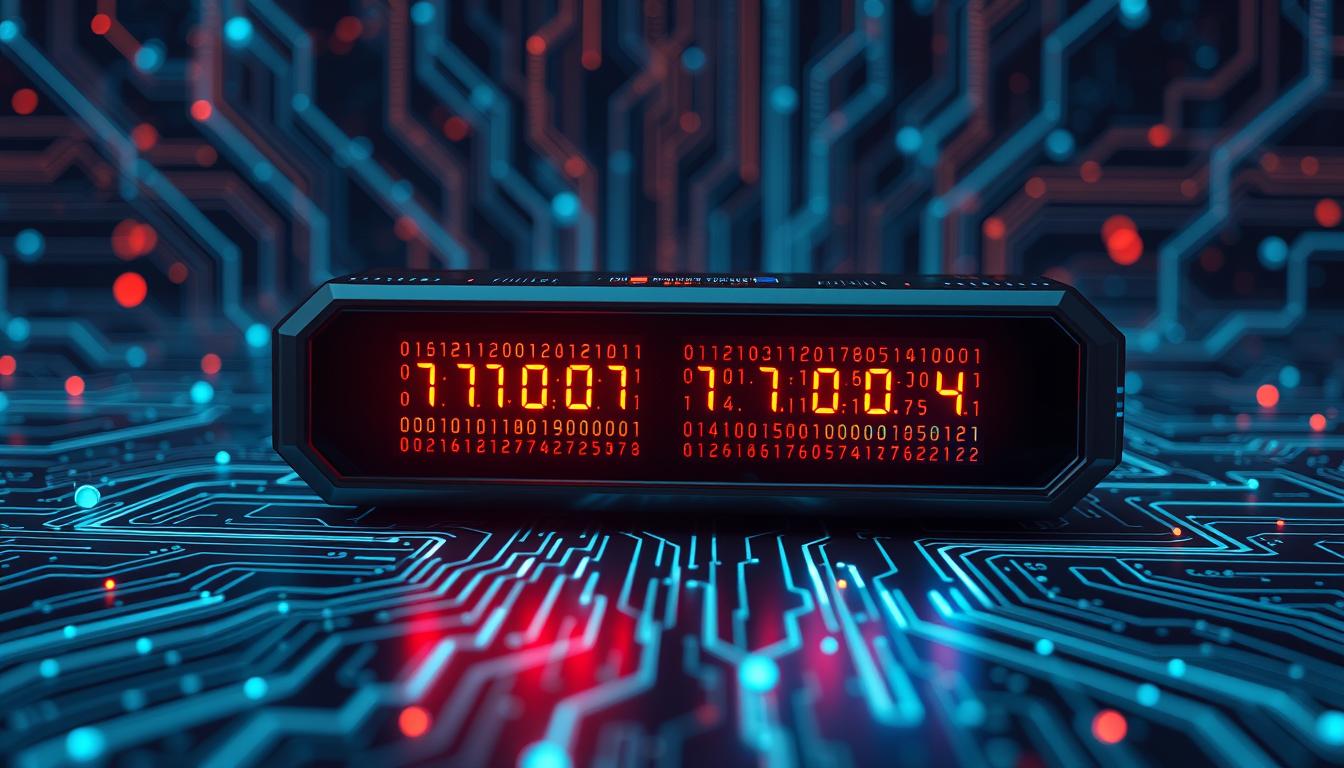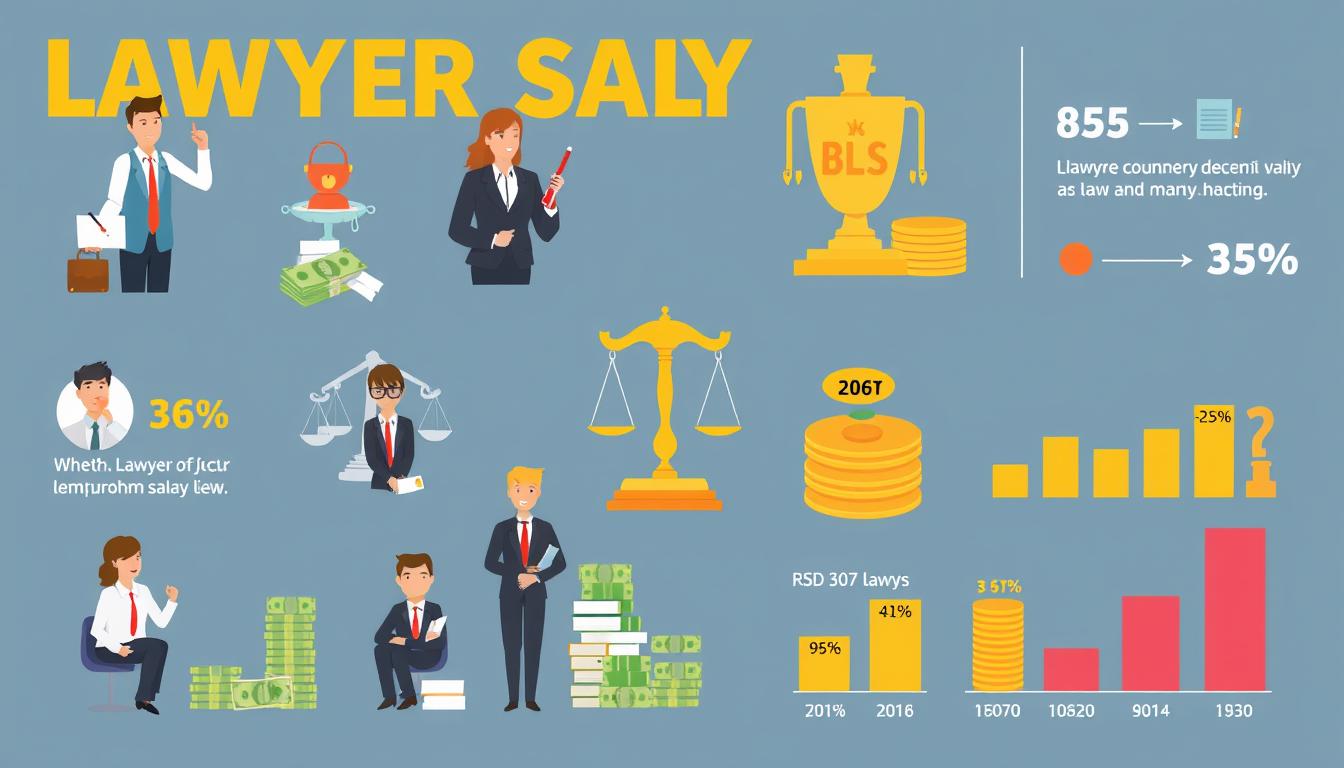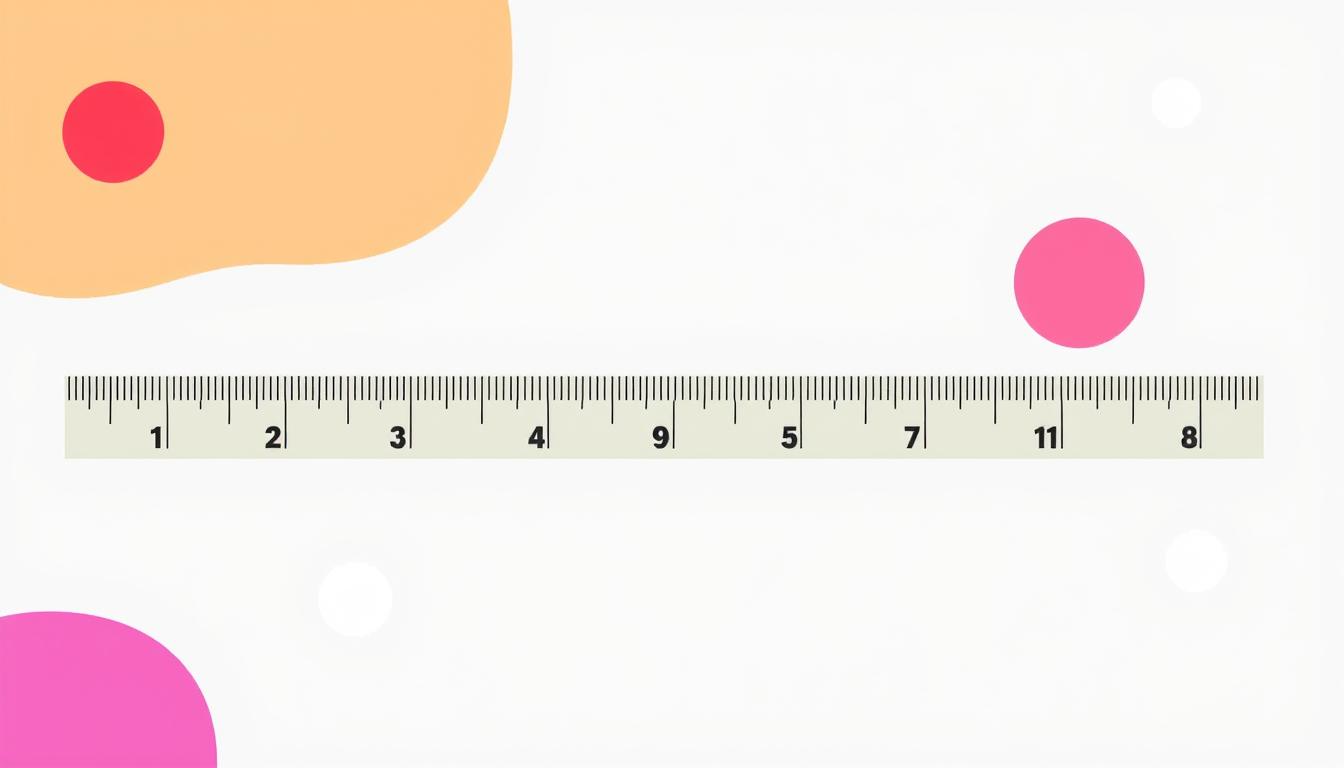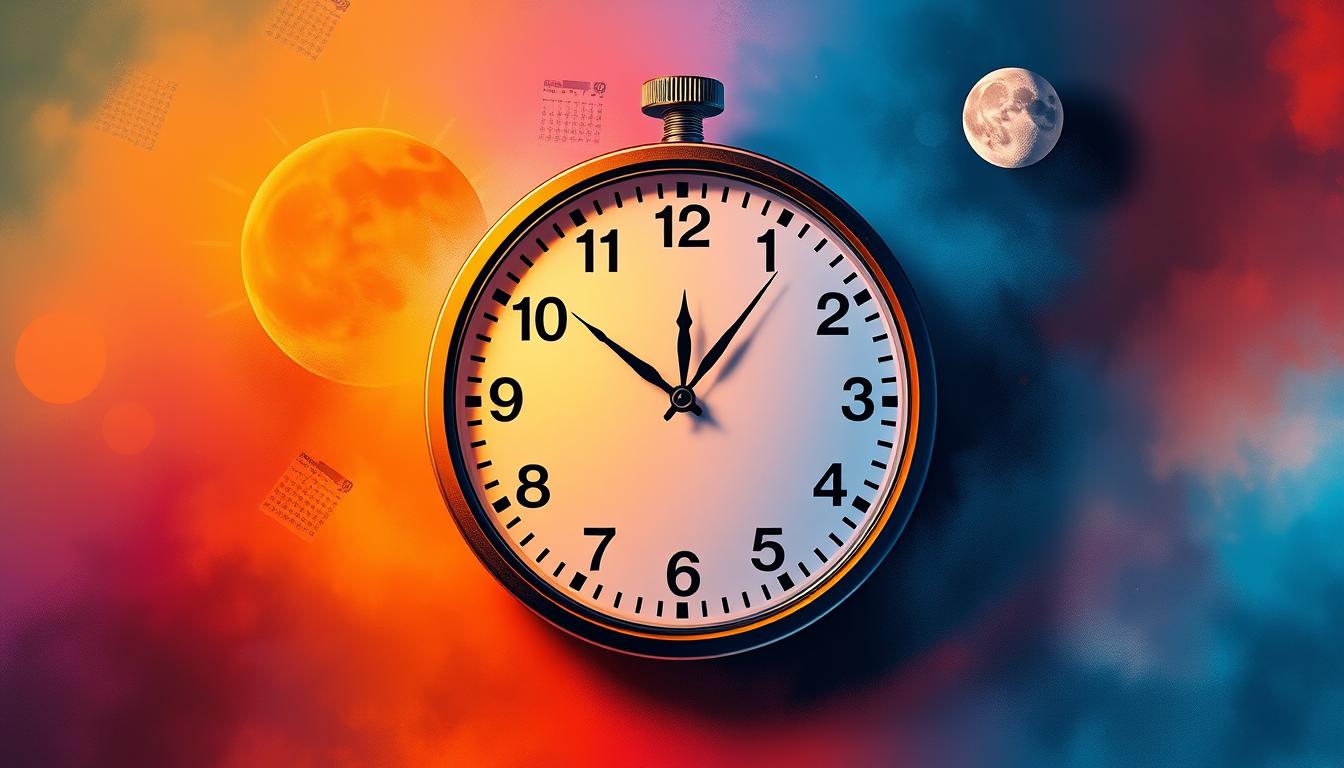A binary translator is a powerful tool. It lets you turn text into binary code, which computers understand. This tool is key in modern computing and digital communication. It makes working with binary data easier and more efficient.
With a binary translator, you can quickly switch text to binary code and back. This is great for programming, data security, and digital communication. It helps make sure your data is sent and stored right, without mistakes.
Key Takeaways
- You can use a binary translator to convert text to binary code.
- A binary conversion tool is essential in modern computing and digital communication.
- Binary translators can help you work with binary data more efficiently and effectively.
- Using a binary conversion tool can ensure that your data is transmitted and stored correctly.
- Binary translators are useful when working with programming languages, data security, and digital communication.
Understanding Binary Code: The Language of Computers
When you dive into computer programming, you’ll hear about “binary code.” But what is it, and how does it work? Binary code uses only two digits: 0 and 1. It’s the base of computer language and helps binary code converters turn text into something computers can read.
Using a binary to text converter means turning text into binary digits for computers. But how do computers understand this binary code? It’s because computers are built to process information in binary. A binary code converter makes text into binary for computers to read and do.
What Is Binary Code?
Binary code is a mix of 0s and 1s that stand for different data like text, images, and sounds. It’s what computers use to do math and follow instructions.
How Computers Read Binary
Computers read binary through logic gates and switches that see 0s and 1s as electrical signals. This lets computers do math and follow instructions based on the binary code.
The ASCII Standard in Binary
The ASCII standard is a way to encode text characters in binary. It uses binary digits for letters and numbers. With a binary to text converter, you can make text into ASCII code for computers to read and do.
What Is a Binary Translator?
A binary translator changes text into binary code and back. You can use an online binary translator for quick conversions. These tools are key in programming, data security, and digital talks.
With a binary translator, you can pick from text-to-binary or binary-to-text conversions. This makes working with binary code easier, even if you’re new to it. Some tools also do character encoding and decoding, which is handy for certain tasks.
Here are some key features of a binary translator:
- Text-to-binary conversion
- Binary-to-text conversion
- Character encoding and decoding
- Support for different data formats
An online binary translator makes working with binary code easier. You can use it from anywhere, anytime. It’s great for programmers, developers, or anyone who deals with binary code.
In short, a binary translator is a powerful tool for working with binary code. It does text-to-binary and binary-to-text conversions, plus character encoding and decoding. Using an online binary translator can make your work faster and more efficient.
| Feature | Description |
|---|---|
| Text-to-binary conversion | Converts text into binary code |
| Binary-to-text conversion | Converts binary code into text |
| Character encoding and decoding | Encodes and decodes characters in binary code |
How Text-to-Binary Conversion Works
Using a binary language converter means you need to know how text turns into binary code. This happens through character encoding, where each letter or symbol gets a unique binary number. This step is key to making sure the binary code really shows what the text says.
To start, you put the text into the converter. It then changes each character into its binary form. This uses the ASCII standard, which gives a special binary code to every character. The binary code made can be used for coding or storing data.
Character Encoding Process
The encoding process is vital in turning text into binary. It gives a unique binary code to every character, like letters, numbers, and symbols. This makes sure the binary code truly shows the text.
Binary Conversion Steps
The steps to convert text to binary are simple:
- Put the text into the binary converter.
- Change each character into its binary code.
- Get the binary code as output.
Understanding Bit Patterns
Bit patterns are the binary codes for each character. Knowing about bit patterns is important when working with binary. A binary converter helps by showing the binary code clearly.
Benefits of Using an Online Binary Translator
Using an online binary translator makes working with binary code easier. You can quickly switch between binary and decimal with just a few clicks. This saves you time and cuts down on mistakes that manual methods can cause.
Accessibility is a big plus of online binary translators. You can use them from anywhere, anytime, as long as you’re online. This is great for developers, programmers, and students who often deal with binary code.
Some main benefits of online binary translators include:
- Fast and accurate conversions
- Support for multiple conversion types, including binary to decimal converter
- Easy to use interface
- Accessibility from anywhere with an internet connection
Adding an online binary translator to your workflow can make things smoother. It’s perfect for projects that need lots of binary conversions or just occasional use. These tools are very helpful.
The advantages of online binary translators are obvious. They offer convenience, easy access, and quick work with binary code. These tools help you work more efficiently and effectively.
| Conversion Type | Benefits |
|---|---|
| Binary to Decimal | Fast and accurate conversions |
| Decimal to Binary | Easy to use interface |
Common Applications of Binary Translation
Binary translation is key in computer science, used in many areas. It helps convert text to binary and back, which is vital in programming, security, and digital talks. Knowing how to turn binary to text is essential.
In programming, binary translators help find and fix code issues. They also boost code performance and spot errors. Binary translation is also vital in keeping data safe by encrypting and decrypting it. This ensures data is safely sent online.
Key Applications of Binary Translation
- Programming and development: debugging, testing, and optimizing code
- Data security: encrypting and decrypting sensitive information
- Digital communication: facilitating secure data transmission over the internet
In digital talks, binary translation helps send data online safely. By turning text to binary, data is sent efficiently and securely. Being able to turn binary to text is key for correct data reception and understanding.
Binary translation is a critical part of computer science, with many uses. Learning to translate binary to text opens up its full power. It’s used in programming, security, and online talks.
| Application | Description |
|---|---|
| Programming and Development | Debugging, testing, and optimizing code |
| Data Security | Encrypting and decrypting sensitive information |
| Digital Communication | Facilitating secure data transmission over the internet |
Features to Look for in a Binary Code Converter
When picking a binary code converter, look for certain key features. A good binary string converter should convert quickly and accurately. It should also be easy to use and support many conversion types.
Some important features to find include:
- Accuracy and speed of conversion
- Supported conversion types, such as text to binary and binary to text
- User interface and ease of use
- Customizable output formats
- Batch processing capabilities
A top-notch binary string converter will also have advanced features. These might include integration with other tools and customizable settings. By looking for these, you can find a converter that fits your needs well.
It’s also key to check the reliability and security of online binary translators. This ensures your data stays safe. Choosing a trustworthy binary string converter means you get secure and accurate conversions.
Step-by-Step Guide to Converting Text to Binary
To convert text to binary, you need a good binary translator or tool. Start by picking your text. You can use simple text, special characters, or numbers. It’s important to know how each will be changed.
When picking a binary translator, look at what it can do. Some tools convert ASCII or Unicode, while others have more features. Knowing these differences helps you pick the right tool.
Selecting Your Input Text
Before you start, check your text options. You can convert text from documents, websites, or even handwritten notes. Make sure your text is correct and error-free.
Choosing Conversion Options
After picking your text, choose how to convert it. You might pick the character encoding, like ASCII or UTF-8, and the output format, like binary or hexadecimal. A good tool will guide you through these choices.
Reading the Output
After conversion, you’ll get a binary output. This is a string of 0s and 1s, the binary code. To understand it, learn about binary code and how it represents text. A binary translator can help you make sense of it.
Using a binary translator or tool makes converting text to binary easy. Just follow these steps and choose the right tool for accurate and quick conversion.
| Input Text | Conversion Options | Output |
|---|---|---|
| Plain Text | ASCII or Unicode | Binary Code |
| Special Characters | UTF-8 or UTF-16 | Binary Code with Special Characters |
| Numbers | Decimal or Hexadecimal | Binary Code with Numbers |
Advanced Binary Translation Techniques
Exploring binary translation, you’ll face more complex tasks. A binary code converter is key to overcoming these challenges. Handling special characters, like non-ASCII symbols and emoji, can be tricky. But, with the right strategy, you can ensure your translations are accurate.
When dealing with special characters, knowing the encoding standard is vital. UTF-8 and Unicode are two common ones that support a wide range of characters. A binary to text converter can convert binary data to text using these standards. Here’s how to handle different encodings:
- Identify the encoding standard used in the binary data
- Choose a binary code converter that supports the encoding standard
- Convert the binary data to text using the chosen converter
By following these steps, you can accurately translate binary data to text, even with special characters. It’s important to pick a reliable binary code converter that matches your encoding standard. This ensures your results are accurate and makes your workflow smoother.
With advanced techniques, you can tackle complex tasks like converting binary to hexadecimal or working with binary files. Mastering these methods will make you more skilled in binary translation. You’ll be able to handle a variety of scenarios with ease.
| Encoding Standard | Description |
|---|---|
| UTF-8 | A variable-length encoding standard that supports a wide range of characters |
| Unicode | A standard that assigns a unique code point to each character, supporting a wide range of languages |
Troubleshooting Common Binary Translation Issues
Using an online binary translator can sometimes lead to problems. You might see incorrect output, encoding errors, or file format issues. To fix these, it’s key to know the common problems and how to check your translations. Start by looking at the input text for special characters or encoding mistakes.
Some common issues with online binary translators include:
- Incorrect output due to encoding errors
- Incompatible file formats that cannot be read by the translator
- Special characters that are not supported by the translator
To solve these problems, try a different translator or get help from the developer. Also, try to understand the error messages to find the main issue. This way, you can get accurate and reliable binary translations.
- Check the input text for any special characters or encoding errors
- Verify that the file format is compatible with the translator
- Seek support from the developer or try a different translator
By following these tips and using an online binary translator wisely, you can get accurate translations. Always check your translations and ask for help when needed to solve any problems.
Binary Translation for Different Programming Languages
A binary language converter is very useful when working with binary data in different programming languages. You can use built-in functions and libraries to convert text to binary in languages like Python, JavaScript, and Java. For example, Python’s built-in functions make it easy to convert strings to binary using the ord and bin functions.
In JavaScript, you can get the ASCII value of a character with the charCodeAt method. Then, you can convert it to binary. Java also has methods like Integer.toBinaryString to convert integers to binary strings. These tools and modules make working with binary data more efficient.
When looking for a binary language converter, consider a few important features. It should support different programming languages, be easy to use, and handle large amounts of data. A binary language converter simplifies working with binary data, allowing you to focus on developing your applications. Whether you’re using Python, JavaScript, or Java, a binary language converter is a valuable tool.
Python Binary Conversion
In Python, you can convert a string to binary with this code: bin(ord(‘A’)). This will show the binary representation of the character ‘A’.
JavaScript Binary Tools
In JavaScript, use this code to convert a string to binary: ‘A’.charCodeAt(0).toString(2). It will display the binary representation of the character ‘A’.
Java Binary Operations
In Java, you can convert an integer to binary with this code: Integer.toBinaryString(65). This shows the binary representation of the integer 65, which is the ASCII value of ‘A’.
Best Practices for Binary Code Conversion
Working with binary code requires following best practices. This ensures your conversion is efficient and reliable. Data validation is key, checking the input data for accuracy. A binary to decimal converter can help verify your data.
Error handling is also vital. It helps catch and fix errors quickly, preventing data loss. A binary to decimal converter makes it easy to spot and correct mistakes, keeping your code accurate.
For better performance, organize and document your conversion steps. This is critical for big projects, where complexity can cause errors. Using a binary to decimal converter and following guidelines can make your work more efficient.
Some important things to keep in mind for binary code conversion are:
- Data validation and error handling
- Performance optimization techniques
- Security considerations for sensitive data
- Documentation and organization of conversion processes
By sticking to these best practices and using a binary to decimal converter, your conversion will be efficient, reliable, and secure.
Remember, effective binary code conversion needs attention to detail and a good understanding of the process. Using the right tools, like a binary to decimal converter, is also important.
| Best Practice | Description |
|---|---|
| Data Validation | Verify the accuracy of input data to prevent errors |
| Error Handling | Implement mechanisms to detect and correct errors |
| Performance Optimization | Streamline conversion processes to improve productivity |
Conclusion
The binary translator is a powerful tool that connects human language to computer code. It helps us understand the digital world better. This knowledge opens up new ways to talk to electronic devices and systems.
Binary translators do more than just change text to binary. They help in programming, keeping data safe, and in digital talks. They make our work easier and improve our skills with digital stuff. Whether you work with computers, data, or just use electronic devices, knowing binary can give you an edge.
By using the tips from this article, you can convert binary code well and fast. This lets you use computer language to its fullest in your daily tasks. Start using binary translators and discover a whole new digital world.













Leave a Reply